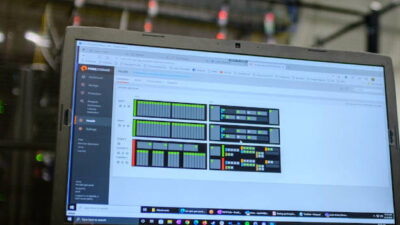Software platform for electrical power systems focuses on on-premise and distributed energy sources.
EDSA, a developer of power analytics solutions for thedesign, testing, and management of complex electrical power systems, has announcedthe pending release of its Paladin SmartGrid software platform that serves as amaster controller to enable the use of on-premise and distributed energysources — such as solar, wind, or local co-generation. Paladin SmartGrid is scheduledto be commercially released by the second quarter of 2010.
More than $33 billion has been included in the 2009 American
Recovery and Reinvestment Act for Smart Grid, energy management, renewable
energy, and related energy projects. A significant focus in these new
programs involves distributed energy resource (DER) systems, or microgrids,
because — rather than relying solely on public power grids — they are
intended to make stand-alone facilities both autonomous and integrated in order
to enhance system efficiency, reduce overall energy costs, without degrading
system reliability.
A major hurdle in the deployment of this renewable and
distributed generation technologies lies in how to monitor and control
consumption and demand, and effect seamless real-time switchovers from one
source to another. Paladin SmartGrid is said to be the first commercially-available software
platform to enable the on-line management and control of next-generation hybrid
power infrastructure incorporating both traditional utility power and
on-premise power generation, e.g., co-generation, solar power, wind turbines, and
battery storage.
EDSA claims its Paladin SmartGrid optimizes energy
consumption on-site employing multiple energy sources, whether they are focused
on a single objective — such as minimizing annual energy cost, carbon
footprint, peak load, or public utility consumption — or a combination of
objectives that varyby time, costs, energy source reliability, etc. As
organizations increasingly seek to supplement their utility power with
on-premise power generation, EDSA claims the Paladin SmartGrid can:
- serveas a master controller for intelligent microgrid designs, monitoring andelectricity trading (i.e., selling power back into the public grid);
- monitorthe microgrid’s power quality, utilization and capacity in real-time, in orderto offer excess capacity to the smart grid;
- monitorall transactions between public electric service and microgridinfrastructure; and
- maintainrate and pricing information for management of private-public exchange.
For example, if a facility were to install on-premise solar panels, windturbines, or co-generation capabilities, and use those sources to charge largeon-site battery storage — while attempting to use public utility power assparingly as possible — it becomes increasingly difficult to ensure powersystem reliability. Since inherently episodic energy sources may be unavailablewhen needed, a real-time balancing act is essential to ensure energy savingsand environmental goals are met, while at the same time guaranteeing thatlocal-loop-wide power systems reliability is never jeopardized.
Paladin SmartGrid is designed to monitor and enable
management of the dynamic nature, and inherently lower power quality feature of
alternative energy sources, to meet both energy management goals, and the high
levels of availability and reliability required. Paladin SmartGrid is said
to "remember" the business and operational goals of a facility — for example,
only use utility power during off-peak hours, except when system reliability
falls below 99.99% — and is continually diagnosing system performance in
real-time while making predictions about how to seamlessly
transition from one energy source to another.
Access other Control Engineering content related to the smartgrid:
- Smart grid meter datamanagement
- Executivesagree to accelerate smart grid standards implementation in U.S.
- Honeywellreceives Department of Energy smart grid grant
– Edited by David Greenfield , editorial director
Control Engineering Sustainable Engineering News Desk



